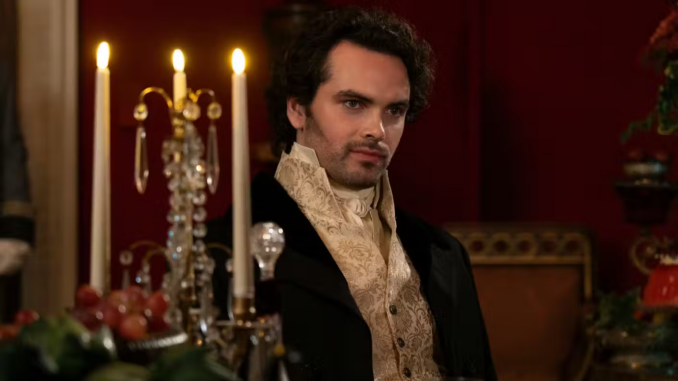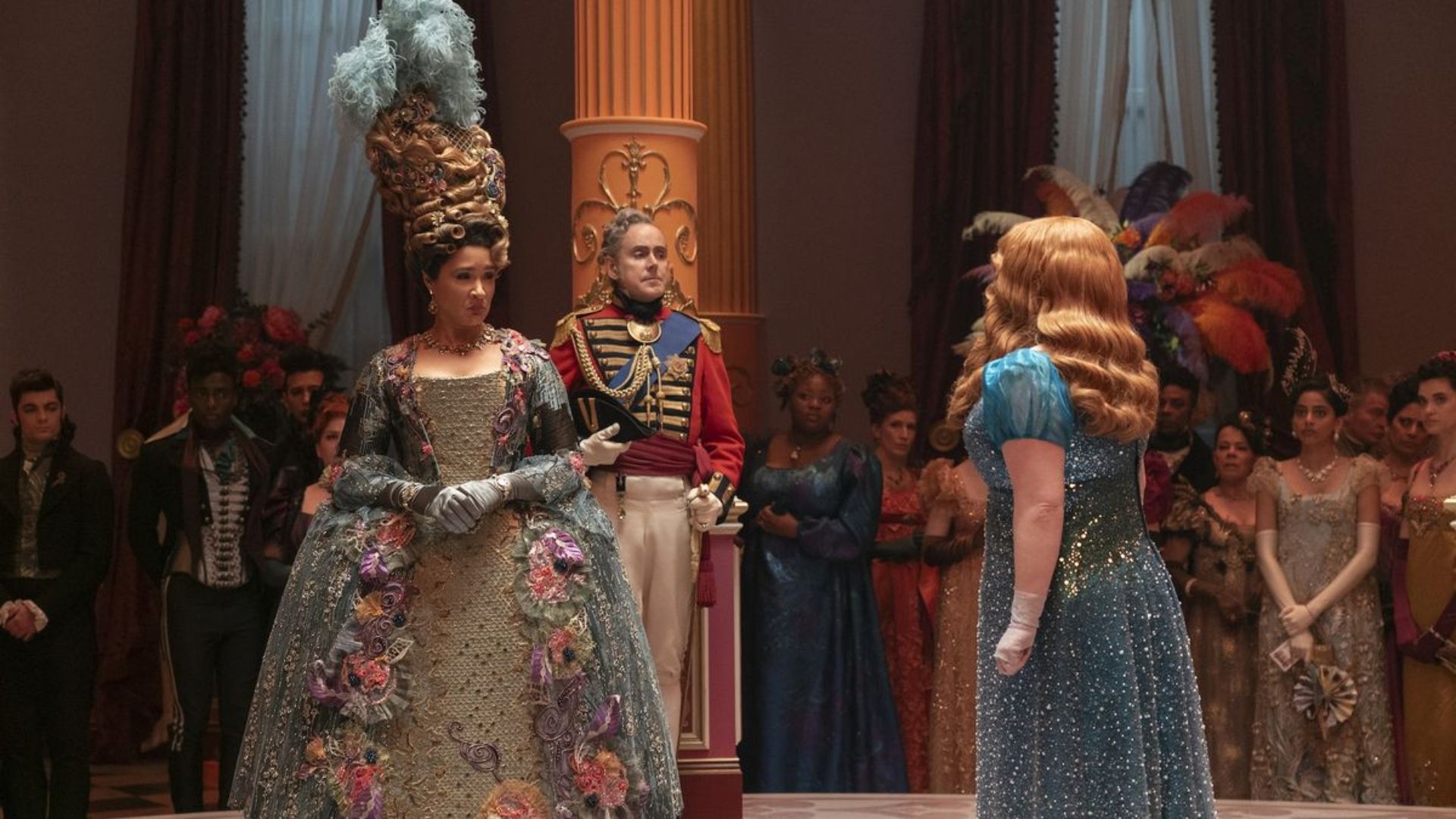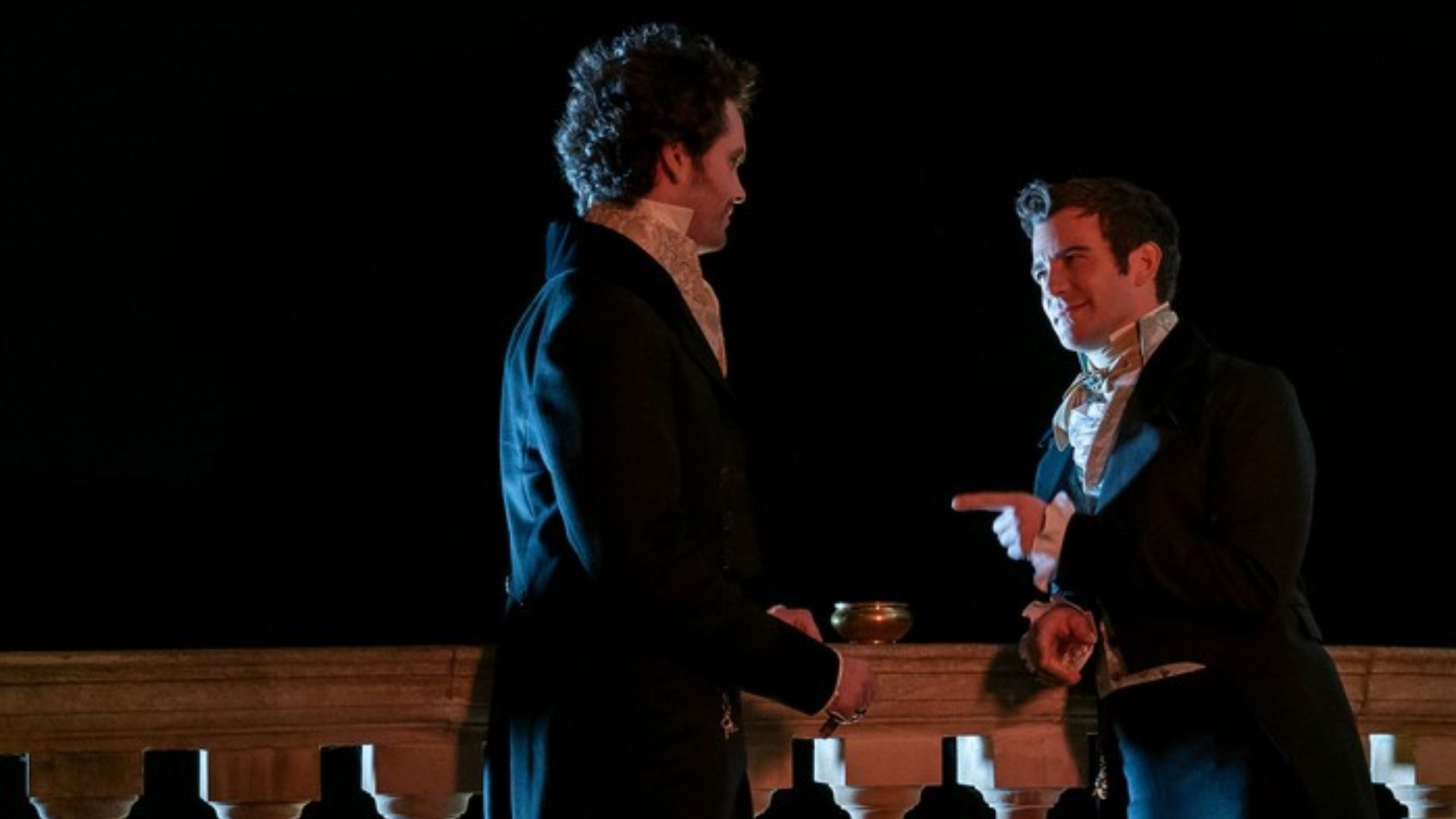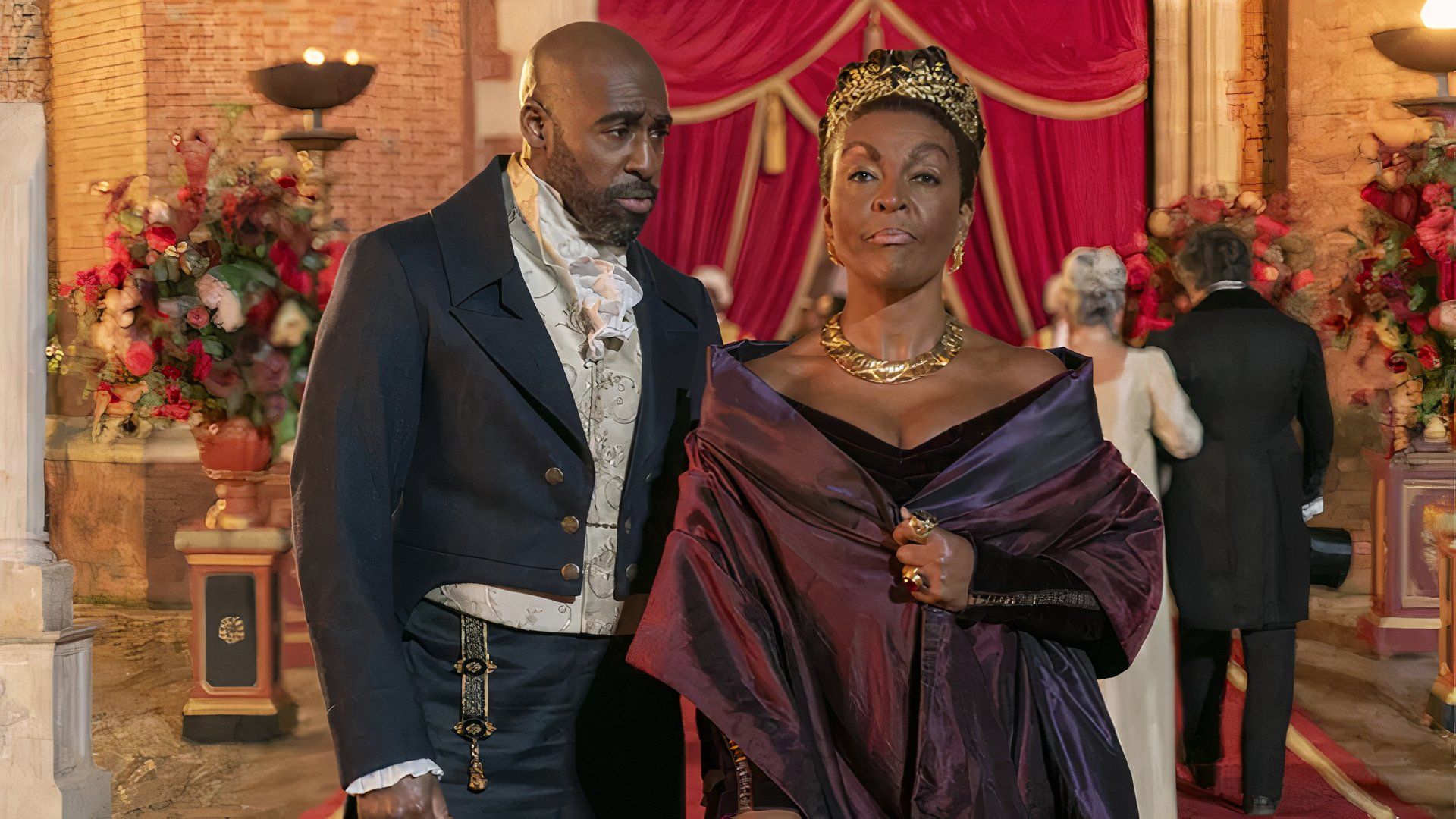
- Bridgerton Season 3 introduces new characters, explores sexuality, and changes Lady Whistledown’s revelation, deviating from the original text.
- The series preserves Lady Whistledown’s role and also brings queer representation and expanded character storylines.
- Despite mixed reviews, Season 3 takes a new direction to create a unique identity separate from Julia Quinn’s novels.
After a gap of two years, Bridgerton Season 3 was finally released as a two-part season in 2024. Part 1 dropped on May 16, followed by Part 2 on June 13. Suffice it to say that the new season has taken the world by storm. With the long wait for the highly anticipated season focusing on wallflower Penelope Featherington and the charismatic Colin Bridgerton, the hopes and excitement of fans were riding high. In true Bridgerton style, the latest season is packed with romance, humor, and, of course, even more gossip and drama.
Since its inception, the Netflix series, although an adaptation of Julia Quinn’s novels, has exercised creative freedom. The show introduced subplots and numerous characters not part of the original source texts. Staying true to itself, Season 3, too, deviated from Quinn’s corresponding novel, ‘Romancing Mr. Bridgerton’, to a considerable extent. Although still centered primarily on the plot of the friends-to-lovers between Penelope and Colin, Season 3 changes aspects, including character backstories, sequence of events, and romance and relationships between characters. Many of the changes carry the potential of affecting the series’ storyline as a whole, allowing the series to take a route different from the original texts.
What Did Bridgerton Season 3 Change?

Some of the most notable changes in Bridgerton Season 3 include the introduction of new characters, exploration of the sexuality of the story’s characters, and the manner in which Lady Whistledown’s identity is revealed. Season 3 introduces Lord Debling and Lord Marcus Anderson, who both go on to play an essential role in the show’s plot. Lord Debling is the ton’s nature-loving bachelor and one of the reasons prompting Colin to realize his feelings for Penelope. Lord Marcus Anderson is Lady Danbury’s brother, whose introduction paves the way for a romantic storyline for the Bridgerton family matriarch, Lady Violet Bridgerton.
Moreover, the series chooses to focus on the sexuality of its characters in a manner that the books do not. Unlike in the source text, Benedict is still searching for love in Season 3, leading him to Lady Tilley Arnold, a widow, and her friend Paul Suarez. The season includes a few steamy looks into the relationship between the three. While the source texts do not explicitly divulge Benedict’s sexuality, series showrunners Jess Brownell and Luke Thompson have both confirmed that Benedict is pansexual on the show. Season 3 also changes the gender of Michael Stirling, the character that Francesca marries after the death of her husband, John Stirling. In the final episode of the season, viewers are introduced to Michaela Stirling instead of Michael Stirling, with Francesca clearly flustered by the introduction.
The revelation of Lady Whistledown’s identity to both Colin and the ton and its aftermath also differ significantly in the book and series. While Colin proposes to Penelope being fully aware of her identity as the gossip columnist in the book, this is not so in the series. Colin does not know Lady Whistledown’s identity when he asks Penelope to marry him. Upon learning the truth, he decides to proceed with the marriage only for the sake of honor.
The manner in which Lady Whistledown’s identity is revealed to the ton in the series is also wildly different from the book. While the book Penelope takes a backseat in the revelation of her identity, with Colin announcing it to the ton, the series sees Penelope taking her fate into her own hands. Writing to the Queen herself, she reveals her identity to the ton at the Dankworth-Finch ball, apologizing for the harm she has caused and pleading for permission to continue. Colin is relegated to the sidelines. The outcome is that the Queen gives her blessing for Penelope to continue writing, although requiring her to do so more responsibly.
Preserving Lady Whistledown’s Character for Future Seasons

Bringing Queer Representation to Bridgerton

While Quinn’s novels do not offer much focus to the queer/LGBTQ+ community, Bridgerton Season 3 makes it one of its primary focuses. Not only does the season portray Benedict in a queer role, but it also hints at a possible queer future for Francesca with the gender-swap of Michael Stirling. Showrunner Jess Brownell, speaking to Teen Vogue, clarified that the decision to give Francesca a queer story was not made with complete disregard for the source text. The author of the novels, Julia Quinn herself, greenlit the queer narrative.
In bringing queer representation to the Bridgerton storyline, the Netflix series sticks to its reputation of being inclusive and going against the norm – something that has also drawn the show a degree of criticism due to being historically inaccurate. Brownell has expressly stated that foregrounding queer love is an important focus for her. Speaking to Refinery29, the showrunner said:
“I think this is a show about the many ways in which people love. So it only feels right to show all the ways in which people love, including queer love. So we are exploring queer love stories across the next couple of seasons.”
The Possibility of Expanding Character Storylines

In deviating from the source text, the series has also availed itself of the opportunity to expand character backstories and storylines, creating the possibility for future spinoffs. Although Season 3 was meant to be Colin and Penelope-centered, the season affords considerable focus to subplots involving other characters – a point based on which the season has drawn criticism. However, through its focus on other characters, the show may be able to build character arcs and expand on their stories.
One important expansion could be in respect of Violet Bridgerton, the matriarch of the Bridgerton family. Lady Violet Bridgerton does not get her own full-fledged story with a romance of her own. Quinn only allows the character a story titled ‘Violet in Bloom’ in ‘The Bridgertons: Happily Ever After’ collection. However, Season 3 introduces Lady Danbury’s brother, Lord Marcus Anderson, as a potential love interest for Violet. The pair appear to hit it off, creating the possibility of a story for Violet on her own – a story in which she explores a second chance at love and is not confined simply to the role of match-making mother.
In not faithfully adhering to Quinn’s books, Season 3 has steered the Bridgerton narrative down a new path. This choice has garnered mixed reviews from fans, with some applauding the show for being progressive and others believing that the series should have been more faithful to the novels. However, the numerous changes in Season 3 have given showrunners an opportunity to explore aspects that Quinn’s work has not, allowing Bridgerton, as a series, to create its own unique identity that is distinctly different from the books. Bridgerton Season 3 is streaming now on Netflix.
